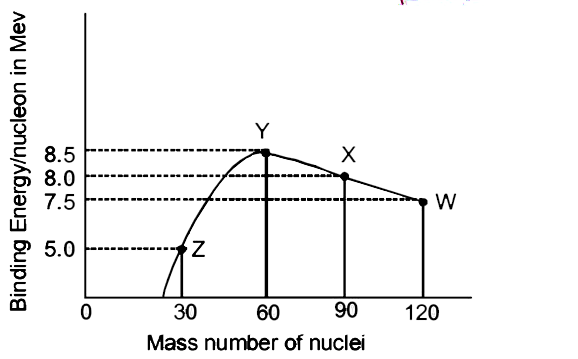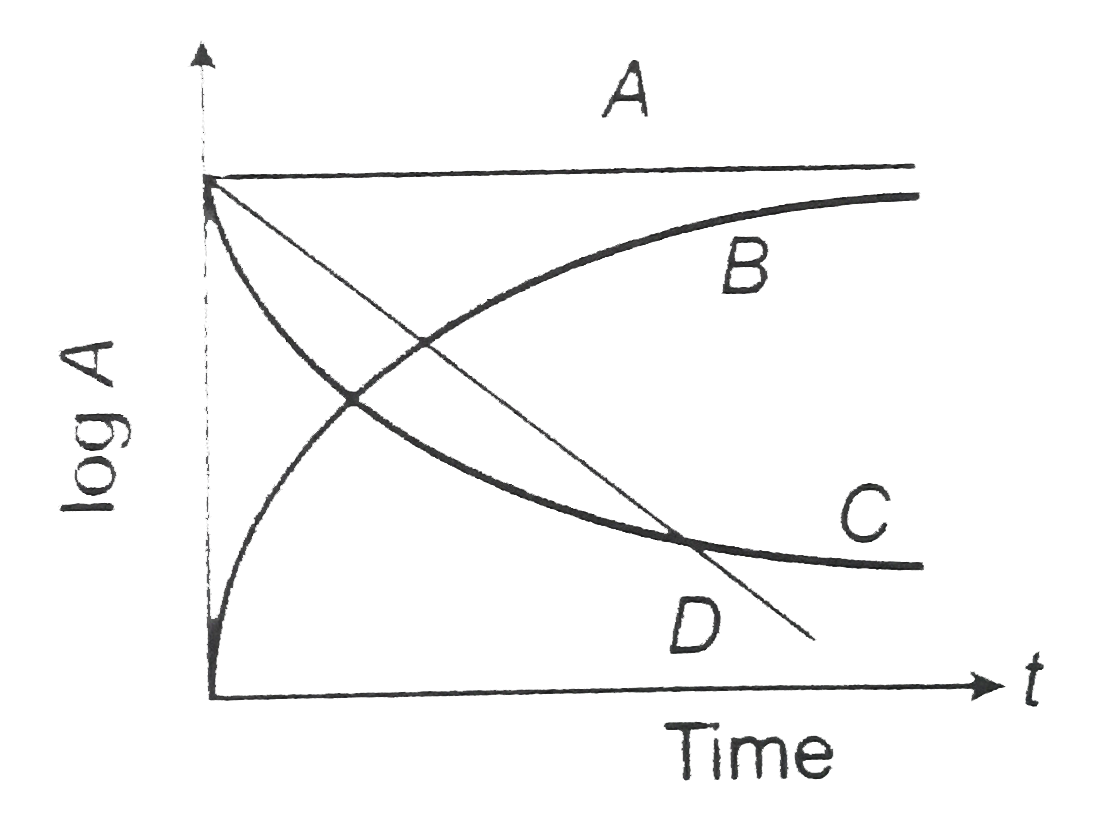Complete Solutions to Section D - Chapter End Test of chapter NUCLEAR PHYSICS of Class 12 book with complete answers and questions
| Class 12 | PHYSICS |
| Chapter | NUCLEAR PHYSICS |
| A2Z | Section D - Chapter End Test |
| Number Of Questions | 29 |
| Academic Year | 2023-24 |
If `N_(0)` is the original mass of the substance of half - life period `t_(1//2) = 5 year` then the amount of substance left after `15` year is
01:00View SolutionA radioactive sample at any instant has its disintegration rate `5000` disintegrations per minute After `5` minutes , the rate is `1250` disintegration per minute. Then , the decay constant (per minute)
02:28View SolutionWhich of the following atoms has the lowest ionization potential ?
01:49View SolutionIn the nuclear fusion reaction
`_(1)^(2)H + _(1)^(3)H rarr _(2)^(4)He + n `
given that the repulsive potential energy between the two nuclei is `- 7.7 xx 10^(-14) J` , the temperature at which the gases must be heated the reaction is nearly
[Boltzmann's constant `k = 1.38 xx 10^(-23) J//K]`01:51View SolutionThe binding energy per nucleon of deuterium and helium atom is `1.1 MeV` and `7.0 MeV`. If two deuterium nuclei fuse to form helium atom, the energy released is.
02:44View SolutionIf radius of the `_(13)^(27) Al` necleus is estimated to be `3.6` fermi then the radius of `_(52)^(125)Te` nucleus be nearly
01:34View SolutionStarting with a sample of pure `.^66 Cu, 7//8` of it decays into `Zn` in `15 min`. The corresponding half-life is.
03:09View SolutionSome radioactive nucleus may emit.
01:21View SolutionWhich of the following is a correct statement?
01:15View Solution`.^22 Ne` nucleus after absorbing energy decays into two `alpha-`particles and an unknown nucleus. The unknown nucleus is.
02:03View SolutionThe half - life of` `I ^ (131)` is 8 days. Given a sample of `I^(131)` at time `t = 0` , we can assert that
01:31View SolutionThe binding energy per nucleon of `O^16` is `7.97 MeV` and that of `O^17` is `7.75 MeV`. The energy (in MeV) required to remove a neutron from `O^17` is.
02:51View SolutionA star initially has `10^40` deuterons. It produces energy via the processes `._1^2H+_1^2Hrarr_1^3H+p` and `._1^2H+_1^3Hrarr_2^4He+n`, where the masses of the nuclei are
`m(.^2H)=2.014` amu, `m(p)=1.007` amu, `m(n)=1.008` amu and `m(.^4He)=4.001` amu. If the average power radiated by the star is `10^16 W`, the deuteron supply of the star is exhausted in a time of the order of05:25View SolutionA nucleus with mass number `220` initially at rest emits an `alpha`-particle. If the Q-value of the reaction is `5.5 MeV`, calculate the kinetic energy of the `alpha`-particle.
(a) 4.4 MeV (b) 5.4 MeV (c) 5.6 MeV (d) 6.5 MeV04:26View SolutionThe half life of radioactive Radon is `3.8 days` . The time at the end of which `(1)/(20) th` of the radon sample will remain undecayed is `(given log e = 0.4343 ) `
02:53View SolutionA freshly prepared radioactive source of half-life `2 h` emits radiation of intensity which is 64 times the permissible safe level. The minimum time after which it would be possible to work safely with this source is
02:58View SolutionA radioactive material decays by simulataneous emission of two particle from the with respective half - lives `1620` and `810` year . The time , in year , after which one - fourth of the material remains is
03:39View SolutionThe half-life period of a radioactive element x is same as the mean life time of another radioactive element y. Initially, both of them have the same number of atoms. Then,
(a) x and y have the same decay rate initially
(b) x and y decay at the same rate always
(c) y will decay at a faster rate than x
(d) x will decay at a faster rate than y02:27View SolutionTwo radioactive `X_(1)` and `X_(2)` have decay constants `10 lambda ` and `lambda` respectively . If initially they have the same number of nuclei, then the ratio of the number of nuclei of `X_(1)` to that of `X_(2)`will be `1//e` after a time .
02:33View SolutionAfter `280` days, the activity of a radioactive sample is `6000` dps. The activity reduces to `3000` dps after another `140` days. The initial activity of the sample in dps is
02:27View SolutionA radioactive sample of `^(238)U` decay to Pb through a process for which the half is `4.5 xx 10^(9)` year. Find the ratio of number of nuclei of Pb to `^(238)U`after a time of `1.5 xx 10^(9)` year Given `(2)^(1//3)= 1.26`
04:13View SolutionA radioactive sample consists of two distinct species having equal number of atoms initially. The mean life of one species is `tau` and that of the other is `5 tau`. The decay products in both cases are stable. A plot is made of the total number of radioactive nuclei as a function of time. Which of the following figure best represents the form of this plot?
(a), (b), (c), (d)
 02:26View Solution
02:26View SolutionBinding energy per nucleons vs mass curve for nucleus is shown in the figure `W,X,Y`and `Z` are four nuclei indicated on the curve . The process that would release energy is
 06:42View Solution
06:42View SolutionThe nuclear radius of a nucelus with nucleon number `16` is `3 xx 10^(-15) m`. Then, the nuclear radius of a nucleus with nucleon number `128` is .
01:37View SolutionThe nuclear radius of `._(8)O^(16)` is `3 xx10^(-15) m`. If an atomic mass unit is `1.67 xx 10^(-27) kg`, then the nuclear density is approximately.
01:53View SolutionThe graph which represents the correct variation of logarithm of activity (log A) versus time, in figure is.
 .01:42View Solution
.01:42View SolutionThe graph between number of decayed atoms `N'` of a radioactive element and time `t` is.
01:23View SolutionAssertion: For the scattering of `alpha`-particles at a large angles, only the nucleus of the atom is responsible.
Reason: Nucleus is very heavy in comparison to electrons.03:13View SolutionIn `beta-`decay, all the emitted electron do not have the same energy the same energy.
`beta-`decay is not a two body decay process.01:46View Solution
Section D - Chapter End Test questions and complete solutions for chapter NUCLEAR PHYSICS of A2Z PHYSICS (HINGLISH) of Class 12
